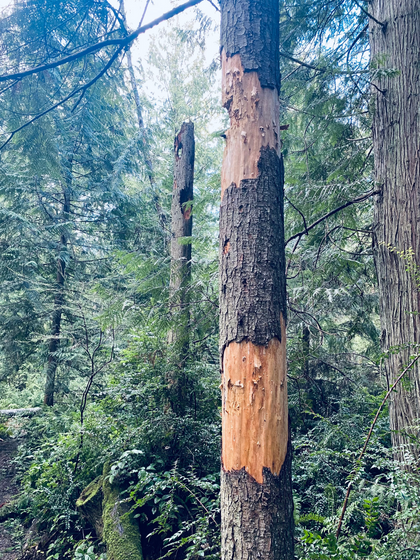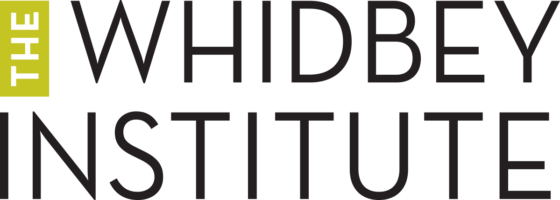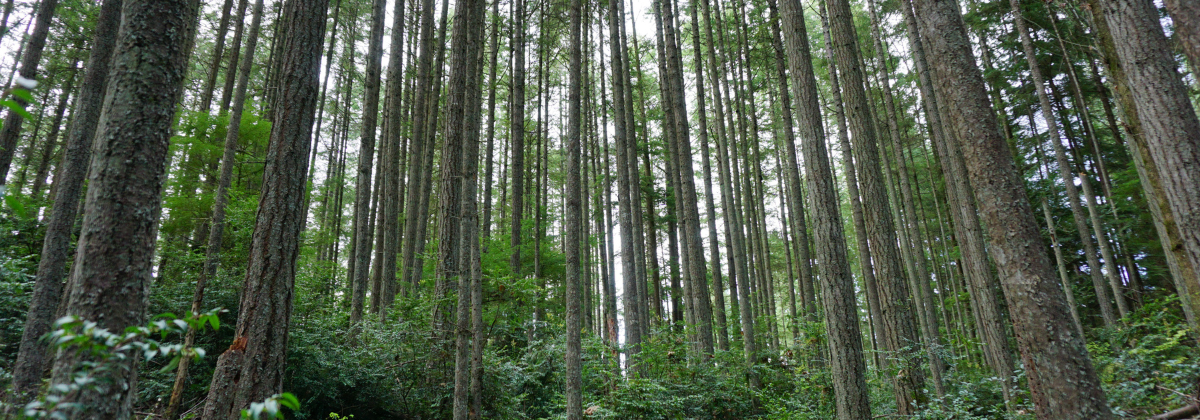This past February, as the Whidbey Institute’s Communication Manager, I had the good fortune to go for a walk in the Legacy Forest with Jessica Larson from the Whidbey Camano Land Trust (WCLT). Jessica is a Stewardship Director with the WCLT and helps to coordinate and monitor the Whidbey Institute’s Conservation Easement along with our Forest Stewardship Plan.
I was eager to learn more about the WCLT’s role in protecting the Whidbey Institute’s 106 acres of forest and wetlands and wanted to hear from her about some of the unique aspects of the land and features to look for when traveling the 4+ miles of trails.
While Jesica was hesitant to single out any one aspect of the forest, it was clear upon learning how the Conservation Easement came to be, the existence and protection of such a large contiguous forested area is pretty special.

In 1966, Fritz and Vivienne Hull purchased a fifteen-acre homestead in the Maxwelton Watershed. In 1972, the Chinook Learning Community was founded and in 1994, the organization came to be known as the Whidbey Institute. As the community grew, the lands under stewardship of the institute expanded, including approximately 62.5 acres formally ceded to the Whidbey Institute in 1997. The Whidbey Institute purchased the Legacy Forest from the Hulls in 2016, and in 2019, entered into the Conservation Easement with the Whidbey Camano Land Trust, protecting all 106 acres in perpetuity.*
The easement encompasses the headwaters of Maxwelton Creek and Quade Creek, and is home to a wide variety of plant and animal life.
While Douglas fir seems to be the predominant tree species in the forest, the rolling topography provides conditions for many types of trees, including Western Red Cedar, Red Alder, Big Leaf Maple, Western Hemlock, Madrone, and Garry Oak, to name a few.
A dense understory can also be found throughout the forest and includes Red and Evergreen Huckleberry, Salmonberry, Sword Fern, Deer Fern, Bracken Fern, Nettle, Foamflower, Wild Carrots, Rose Hips, and Horsetail and Skunk Cabbage in the wettest areas.
If your walk through the forest is quiet, you might see or hear one of the many animals noted in the Forest Stewardship Plan such as coyotes, black-tailed deer, salamanders, newts, tree frogs, and numerous species of birds.Hiking from the lower parking lot along the Storyhouse Loop, I asked Jessica about the numerous limbs and windfall that could be seen in the forest and along the trails, particularly after the severe weather we experienced last fall. Jessica talked about the importance of biomass in a healthy forest, “A natural forest is messy. What you want to see in that mess is different sized trunks and limbs and dead wood in various stages of decay. Mushrooms are a good sign. Messy forests provide habitat for birds and amphibians.”
We stopped near the North Junction and found a section of the forest that served as a perfect example; a tree trunk lying on the ground, likely the former home of a woodpecker, mushrooms growing on rotting wood and in the soil, ferns growing up through a tangle of dead limbs and branches, with native shrubs and Douglas firs growing alongside snags and the rubble.

I wondered if all the biomass we were seeing posed a fire hazard. Jessica noted the importance of keeping the dry woody matter well below the forest’s canopy where the most harm could take place in the event of a fire. Drought of course is a large driver of hazardous fire conditions and the WCLT partners with the Whidbey Institute to regularly survey the health of the forest and its ability to withstand changes in our climate.
In the established building envelopes of our easement, such as the Heartland area and Storyhouse meadow, it is a common and acceptable practice to clean up after storms and “park-out” the land. “There is a balance to be sought when looking at the needs of an organization and their natural spaces; giving the forest what it needs to remain healthy while creating spaces that are inviting and accessible to visitors.”
The WCLT visits the Whidbey Institute every year. With such a large area to monitor, it’s not feasible to see every corner of the property each time. WCLT stewards focus on an area of interest to assess and document conditions while also making sure to keep a close eye on the building envelopes, established open spaces in and out of the forest, and any changes to the trails.
Rounding out our walk along Quade Creek, I remarked that perhaps the most unique aspect of the land was the efforts of the Whidbey Institute and the WCLT to preserve the forest in as natural a state as possible while also inviting people to experience it firsthand. Jessica reiterated that out of the 76+ properties they monitored, the Whidbey Institute was one of only two that included a publicly accessible trail system.
“A forest is a community, one that depends on people to thrive, just as people benefit from the presence and gifts of the forest. The forest just wants to be a forest, and we the human stewards want to ensure that the forest community members have everything they need to thrive, including plenty of water and minimal impact on beings that grow and live on the land. The Whidbey Institute’s Forest Stewardship Plan reflects our agreement with the forest to be what it’s going to become, to do all we can as human beings to encourage and protect the land and forest beings.” (Excerpt from Whidbey Institute Forest Stewardship Plan, October 2021)
Look for more stories in the coming months about the land surrounding the Whidbey Institute and the work being done by our land stewards and volunteers.
We are grateful for our collaboration with the Whidbey Camano Land Trust and the guidance we receive from our Forest Stewardship Plan that continues to tell the story of the land and supports our mission to nurture the conditions for transformational learning.
*Summarized from Whidbey Institute Forest Stewardship Plan, October 2021

